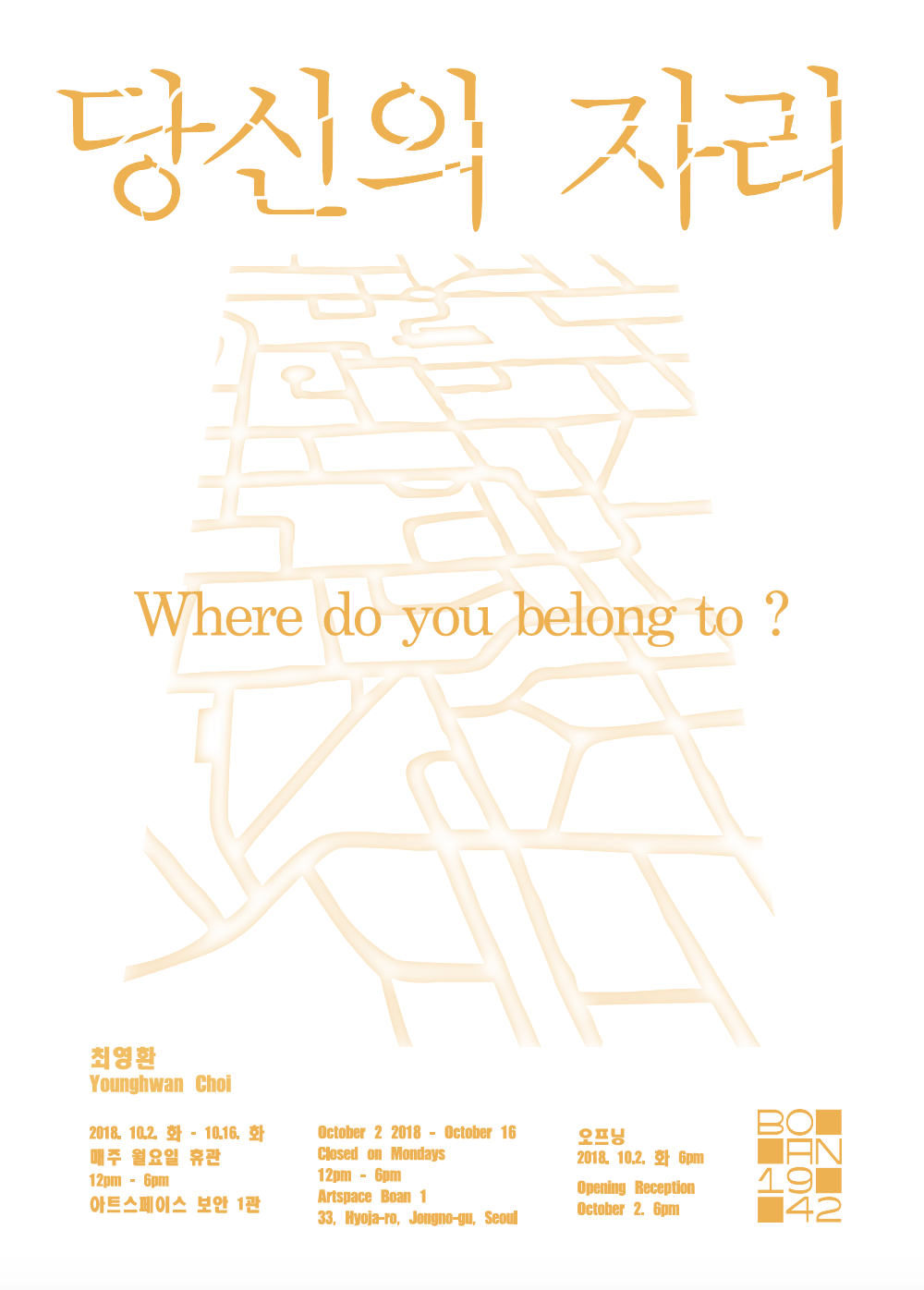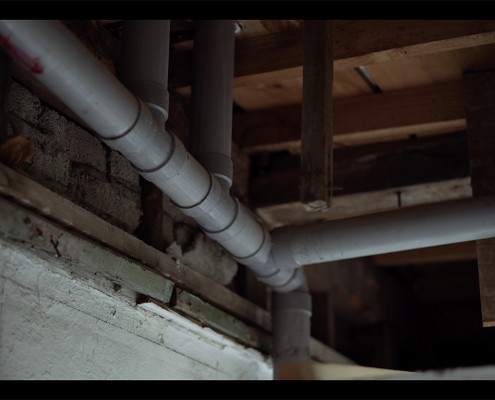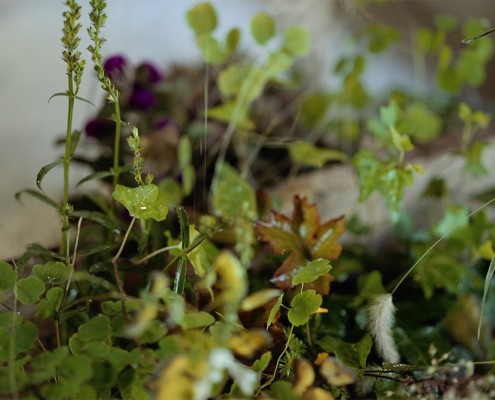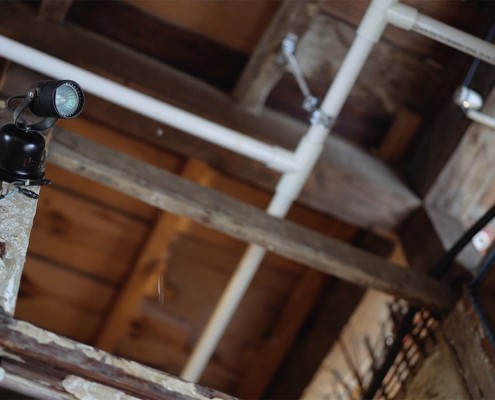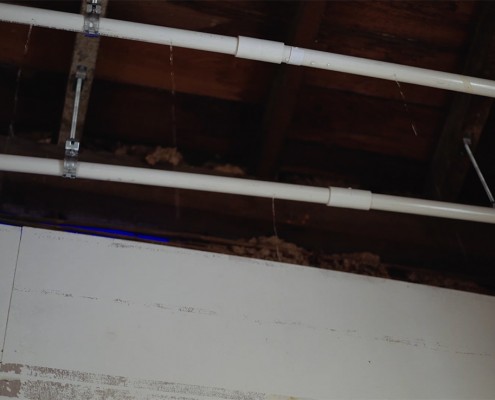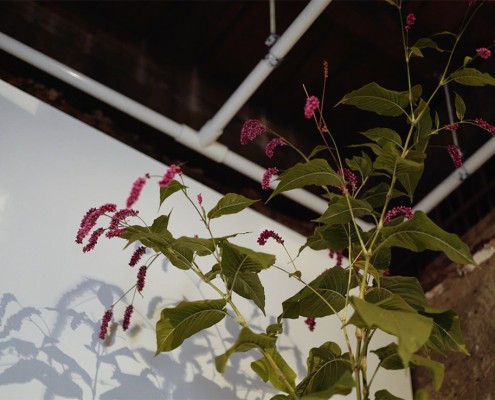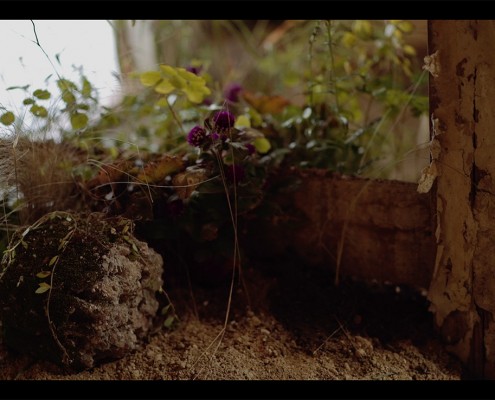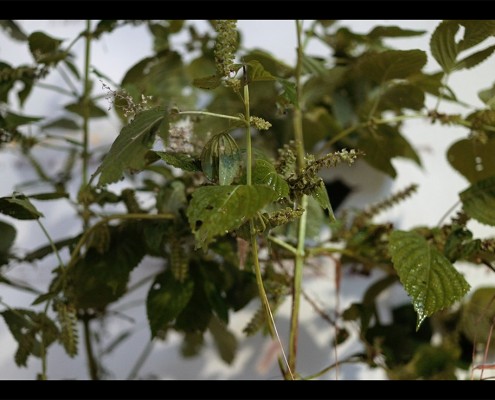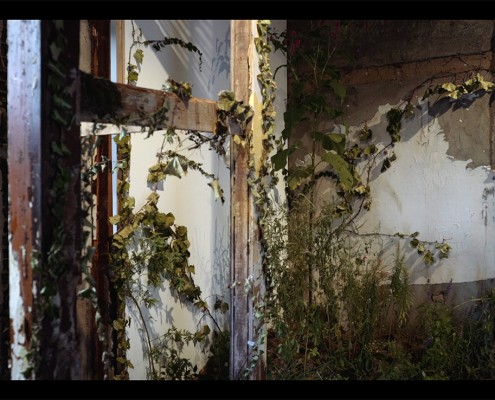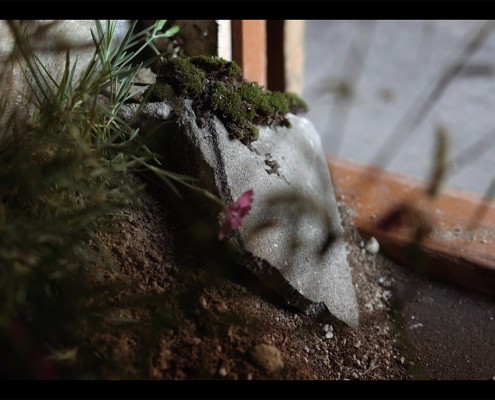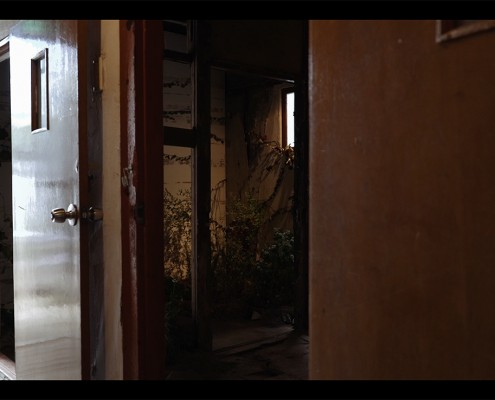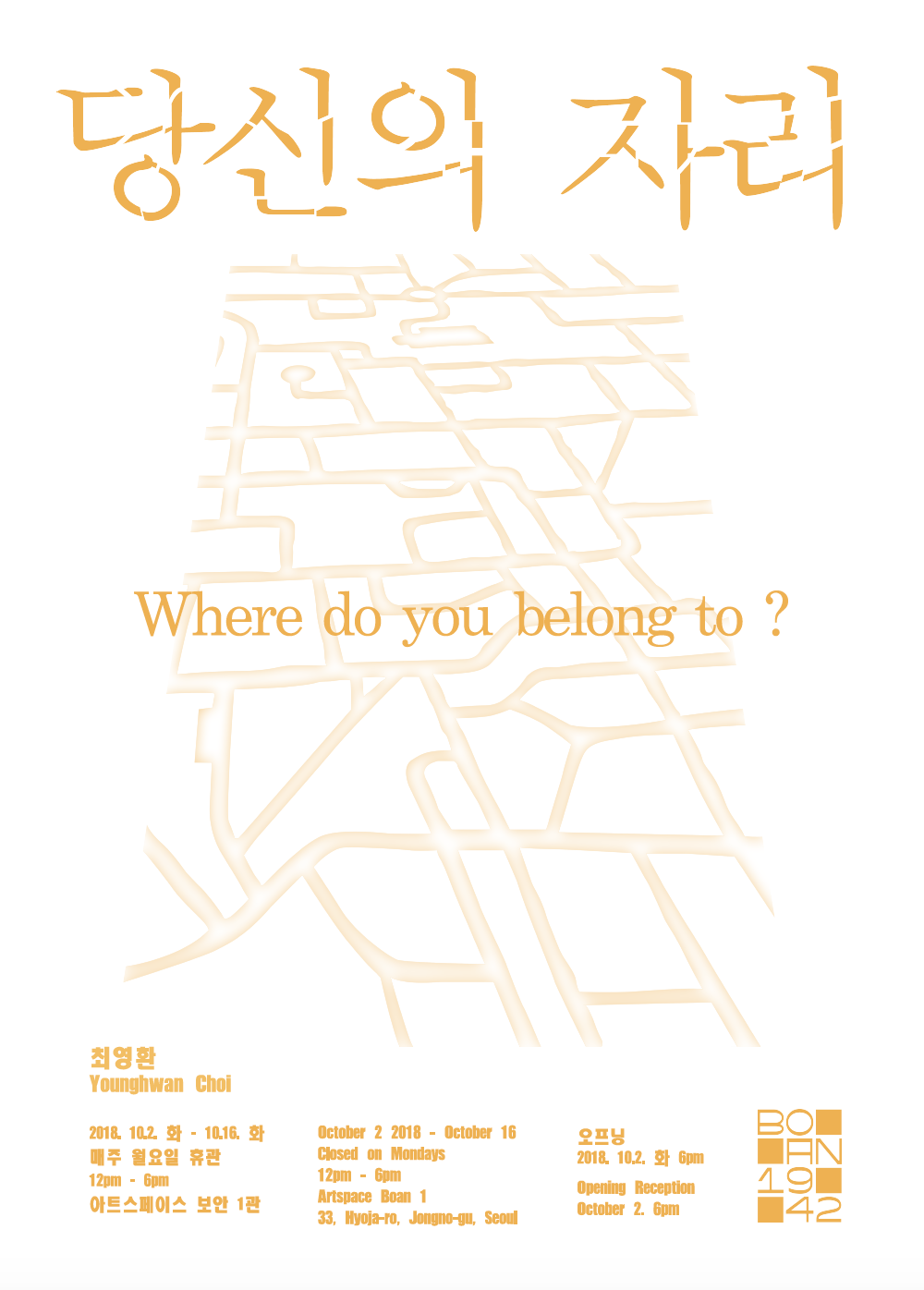조각난 방; 당신의 자리는 어디입니까?
송고은(아트스페이스 보안)
도심 거주지의 소멸과 생성의 연대기에 축적된 감각을 다루는 최영환의 개인전 <당신의 자리>(2018)는 지난날 누군가의 보금자리였으나 이제는 폐허처럼 변해버린 ‘조각난 방’에 대한 작가의 오랜 질문, ‘당신의 자리는 어디입니까?_ Where do you belong to? ’로부터 시작되었다. 스카이라인 아래 감춰진 황폐화된 도시의 공간과 그 사이를 비껴간 지점을 찾아 이주를 반복할 수밖에 없는 사람들의 이야기에 작가는 줄곧 천착해 오고 있다.
이제는 ‘도시재생’이란 또 다른 이름의 개발이 진행되고 있는 성북동을 중심으로 주민들의 시시콜콜한 이야기에서 오래된 동네가 점차 변모해가는 과정을 엿볼 수 있었던 <동네 스토리 닷컴>(2012-2014), 개발과 보존 사이 대립된 결의로 채워진 원색조의 현수막 대신, 태양빛과 거울의 반사면을 통해 각 개인이 갖는 집의 의미를 짧은 문장으로 만들어 골목길을 비춘<사라지기 쉬운 현수막>(2014), 서대문구 현저동의 상황을 통해 개발의 기대감이 사라져버린 이후의 장소와 남겨진 공동체에 관해 이야기한 <어딘가에 아무 곳도 아닌>(2017) 등이 그 일련의 작품들이다. 작가는 여전히 현저동이란 곳에서 불확실한 경제적 희망이 섣부르게 바꿔버린 한 동네의 과거와 현재의 모습을 관찰하며 도심 어딘가에서 현재진행형으로 다가오고 있을 불운한 미래에 맞서기 위한 시도를 지속하고 있다.
최근 특정한 가치와 장소에 머무르지 않는다는 노마디즘(Nomadism)이 일상의 한 특징으로 여겨지기도 하지만 지속되는 이주의 삶이 ‘원치 않는 것’이라면 이로 인해 발생되는 상황은 매우 다를 것이다. 작가는 도시의 삶에 강요된 이주의 과정과 결과들을 주의 깊게 바라보며 “우리는 어느새 정주하기보다는 잠시 머물다가 떠나는 삶에 길들여져 가고 있다.”라고 말한다. 모든 사회 문제가 그렇듯이 주거 문제 역시 한 개인이 해결하기 힘든 문제다. 다만, 그 해결책은 현재 혹은 가까운 미래에 대부분의 사람들이 겪을 ‘공동의 문제’로 인식하고 서로의 어려움을 ‘공감’하는 것에서부터 시작될 것이다. 이번 전시 역시 그 연장선의 시도가 될 수 있기를 기대한다.
최영환 개인전
당신의 자리
전시기간 / 2018년 10년 2일 – 10월 16일
관람시간 / 12:00 – 18:00 (매주 월요일 휴관)
전시장소 / 아트스페이스 보안 1 (종로구 효자로 33)
오프닝 / 2018년 10월 2일 화요일 오후 6시
전시 관련 문의
통의동 보안여관 : 02-720-8409 / boan1942@gmail.com/
www.boan1942.com
www.facebook.com/boan1942
https://www.instagram.com/boan1942
a. 시작 된 질문; ‘원치 않는 이주’는 당신의 삶을 어떻게 변화 시켰습니까?
- 끝내 풀지 못한 이삿짐들.
- 거듭된 이사 중 사라진 소중한 물건에 대한 기억들.
- 필요하지만 짐이 될 까 싶어 선뜻 구입하지 못하는 가재 도구들.
위는 작가가 포착해낸 원치 않는 이주가 남긴 일상의 습관과 사물들이다. 이번 전시의 기반이 되는 <원치 않는 이주의 경험이 당신의 삶을 어떻게 변화 시켰습니까?>(2018)는 자신의 거주지를 강제로 떠나야만 하는 홀몸 어르신들의 주거 문제를 공유하고 주거 대안을 모색하는 공동체 미술 프로젝트의 일환으로 시작되었다. 작품은 다양한 계층의 세입자들이 말하는 이주의 경험을 인터뷰해 편집한 사운드 설치와 실제 이와 비슷한 이주의 경험을 가진 관객들이 직접 자신의 경험담을 함께 공유할 수 있도록 구성되었다.
b. “ 살아서도 기거할 곳을 한 평 갖지 못하더니, 죽어서도 묻힐 땅 한 평이 없네”
<사이 공간>(2018)은 앞서 언급된 프로젝트의 인터뷰 중 한 어르신의 넋두리와 같은 말에서 비롯된 작품이다. 이 콘크리트 구조물은 한 명이 겨우 누울 수 있는 최소한의 크기로 평생을 속할 곳이 없던 사람들이 그 삶을 마감하며 잠시나마 자신의 공간으로 소유할 수 있는 마지막 장소를 상상하게 한다. 이처럼 작가는 마주한 문제의식을 리서치와 인터뷰, 그리고 이들을 나열하는 방식의 아카이빙 형식으로만 풀어내지 않는다. 온전히 남겨지지 못한 그들의 사라진 언어를 작가는 시적 가공을 통해 또 다른 조형언어로 변형된다. 작가에게 그들의 현실 자체를 그대로 드러내는 일도 중요하지만 이를 자신의 프리즘을 통해 새롭게 해석하는 것도 작가의 작업 과정에서 중요한 요소로 보인다.
c. 건축물과 자연이 만든 정원, <모던가든>(Modern Gaerden)
흔히 사람들은 시멘트와 아스팔트위로 솟아오른 식물들의 생명력에 놀라워한다. 여린 잎새를 보며 단단한 구조물을 비집고 뚫어 낼만한 파괴력을 상상하기 힘들기 때문일 것이다. 인간은 자연이 가진 고유한 체계 이상의 또 다른 가능성을 확신했기 때문에 거침없이, 합리적으로 땅을 개간해왔다. 그러나 실제 인간은 그러한 비전을 가지고 있었을까? 이제 갈길을 잃은 듯이 망쳐진 땅 위에 미래의 비전은 자신감을 잃었다. 도시의 먼지로 산화될 빈집과 그 물체들을 뒤덮은 자연은 그 공백을 채워간다. 그리고 이제는 오히려 인간의 비전을 내려두고 비워주어야 할지도 모른다고 암시하는 듯 하다. 작가는 이러한 풍경을 관조하며 <모던가든>(2018)을 통해 인간 대 자연의 어떤 사투나 경쟁이 아닌 매우 유기적인 방식으로 ‘자연의 점거’를 전시장 안으로 끌어들인다. 작품은 사람들이 떠나고 남겨진 장소에서 일어나는 변화를 기록한 영상과 그 시간이 만든 결과물을 압축적으로 드러낸다. 이는 인간이 떠난 후 비인간 사이의 행위들 즉, 건축물과 자연 사이의 상호작용을 통해 폐허 이후의 공간에 또 다른 가능성을 보여주는 듯 하다. 이렇게 이 작품은 건축물과 자연 또한 그 시간 속에서 서로에게 영향을 주며 그 존재의 의미를 새롭게 변화 시킨다.
이제 이번 전시에서 보여지는 예술적 활동들은 현실에서 또 다른 질문을 만난다.“예술의 역할이란 무엇인가?”, “예술이 세상을 변화시킬 수 있는가?”, “오늘, 예술은 무엇을 해야하는가?” 현실의 문제를 직접적으로 해결할 수 없다는 자책과 같은 질문들이다. 이는 사회적 문제와 관계한 모든 예술의 활동을 무기력하게 만드는 듯 여겨진다. 하지만 예술은 언제나 이를 포함한 모든 질문에 대해 고민하기를 멈추지 않는다. 그리고 어쩌면 예술의 실제적 역할은 오늘날 당도한 현실과 이상의 세계에서 마주하는 수많은 질문들은 외면하지 않는것 그 자체에 있을지도 모른다. 작가가 던진 질문을 다시 되돌아본다. 당신의 자리가 어디인가?는 사실 거주의 문제 뿐아니라 존재론적 질문을 포함하고 있는 것이다. 그래서 이 질문은 마치 당신의 존재는 무엇인가?라고 묻는 것과 같다. 거주와 이주에 대한 정의는 지극히 주관적일 수 있으나 그것이 우리 삶의 필수적인 요소인 것은 거부 될 수 없을 것이다. 이는 선택이 허락되지 않은 이들과 이상 뒤에 남겨진 건축물, 그리고 그 공백을 채워나가는 도심의 자연에 대한 단상을 담고있다. 현대 도시 공간 안에서 구분이 불명료해져 가는 ’자연‘과 ’인공‘ 사이의 경계를 관객들에게 다시금 질문하게 된다. 당신의 자리는 어디입니까?

